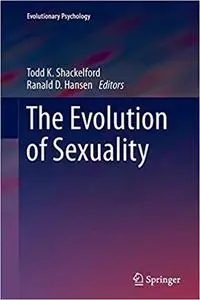Todd K. Shackelford, Ranald D. Hansen, "The Evolution of Sexuality"
English | 2014 | ISBN: 3319093835 | PDF | pages: 294 | 3.9 mb
English | 2014 | ISBN: 3319093835 | PDF | pages: 294 | 3.9 mb
Attraction, mating, reproduction: it is a given that as a species, human beings are concerned with sex. And whether the study compares sexual behaviors of men and women or considers the proportions between nature and nurture, most roads lead back to our distant ancestors and/or our fellow animals.
The Evolution of Sexuality collects stimulating new empirical findings and theoretical concepts regarding both familiar themes and emerging areas of interest. Following earlier titles in this series, an interdisciplinary panel of contributors examines topics specific to the whys of male and female sex-related behavior, here ranging from biological bases for male same-sex attraction to the seemingly elusive purpose of the female orgasm. This vantage point between biology and psychology gives readers profound insights not just into human differences and similarities, but also why they continue to matter despite our vast understanding of culture and socialization. And intriguing dispatches from the humanities review sexual themes in classic works of literature and explore the role of parent-offspring conflict in the English Revolution of the seventeenth century. Among the topics covered:
- Sexual conflict and evolutionary psychology: toward a unified framework.
- Assortative mating, caste, and class.
- The functional design and phylogeny of female sexuality.
- Is oral sex a form of mate retention behavior?
- Two behavioral hypotheses for the evolution or male homosexuality in humans.
- Sperm competition and the evolution of human sexuality.
The Evolution of Sexuality will attract evolutionary scientists across a variety of disciplines. Faculty, graduate and undergraduate students, and researchers interested in sexuality will find it a springboard for discussion, debate, and further study.



